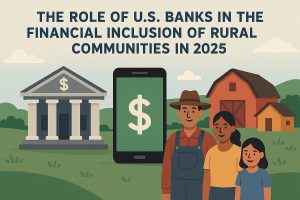Navigating college life in the United States is not just about picking the right major or surviving finals week. It also involves making smart financial choices from the beginning. For students, selecting a bank is more than just choosing where to keep their money — it’s about finding institutions that offer flexibility, low fees, and real-world benefits designed to ease the financial burden of student life.
As digital banking grows in popularity, traditional and online banks are stepping up their game to compete for young customers. Whether you’re a domestic student starting college or an international student learning to manage finances in a new country, understanding which banks truly cater to your needs can give you a powerful advantage from day one.
Why chase stands out for college students

Chase Bank continues to be a strong favorite among college students due to its popular Chase College Checking account. What makes Chase particularly appealing is its wide presence across the US, with thousands of branches and ATMs. For students who move across states or travel often, this accessibility means they’re never too far from assistance or free ATM services, which becomes especially important when studying away from home.
One of the major benefits offered to students is the waiver of the monthly service fee for up to five years while enrolled in college. This is an important feature that allows students to manage their money without worrying about unnecessary deductions, a significant consideration when operating on a tight budget. Chase also frequently runs promotional offers for new students, such as a cash bonus for opening an account and completing simple banking activities.
Bank of America’s student-centered advantages
Bank of America has long recognized the value of supporting students through its Advantage SafeBalance Banking account, which caters directly to young adults beginning their financial journey. One of the standout features of this account is the lack of overdraft fees, a common and frustrating pitfall for students learning how to manage expenses.
The bank also waives the monthly maintenance fee for students under 25 enrolled in school, a policy that ensures more of a student’s money stays in their hands. Combined with a robust online and mobile banking platform, this makes it easy for students to keep tabs on their finances in real time.
Bank of America also supports students in building their credit through options such as secured credit cards and financial education resources. These tools are useful for students who want to establish good credit early and avoid common traps like overspending or missed payments.
Why Wells Fargo is a trusted choice among students
What sets Wells Fargo apart is its comprehensive approach to student services. In addition to banking, Wells Fargo has long invested in educational support, including student loans and scholarship programs that align with its broader financial services. This makes it an appealing option for students who want all their financial needs in one place.
For students who are also planning their financial future beyond school, Wells Fargo offers early access to credit-building tools and savings programs. Advisors are available to help young customers create customized plans, which is an invaluable service for those beginning to think about major life goals like buying a car, renting an apartment, or applying for a first job.
The rise of online banks and digital-first solutions
In recent years, online banks have emerged as serious contenders in the student banking space. Without the overhead costs of physical branches, digital banks such as Chime and Capital One 360 can pass savings on to customers through features like no monthly fees, no overdraft charges, and early direct deposit access.
Chime, for instance, has gained traction among younger users thanks to its intuitive app and helpful financial tools. Students appreciate the automatic savings features, round-up transactions, and alerts that keep spending in check. Capital One 360 also offers a student-friendly checking account with a clean interface and access to fee-free ATMs across the country.
The absence of physical branches doesn’t mean these banks lack customer service. Most digital-first institutions offer strong support through chat, email, and phone, often with faster response times than traditional banks. The experience feels personalized, even though it’s entirely online, and this resonates well with digital-native students who are used to managing everything from coursework to social lives through their smartphones.
Credit unions and community banks offering a personal touch
While major banks dominate the conversation, many students find excellent support through credit unions and community banks. These smaller institutions often offer better interest rates, lower fees, and a more personalized customer service experience. Credit unions such as Navy Federal and Alliant cater to students with minimal fees and the same digital conveniences as larger competitors, but with a more community-focused approach.
Students who open accounts with local banks or university-affiliated credit unions benefit from tailored offers designed specifically for their lifestyle. These may include discounted student loans, access to campus-specific promotions, or financial literacy workshops.
Another benefit of choosing a credit union or community bank is the emphasis on financial education. These institutions typically place strong focus on teaching customers about budgeting, credit management, and long-term saving. This education-first model can give students an important head start in their financial journey, preparing them not just to survive college financially but to thrive well beyond graduation.
Final thoughts: finding the right banking partner for your student journey
Choosing a bank as a student isn’t just a financial decision — it’s a lifestyle choice that can shape how you handle money for years to come. The best bank for students is the one that aligns with their habits, goals, and academic path.
As tuition and cost of living continue to rise, students need financial tools that are not only functional but empowering. The right banking partner will provide freedom from unnecessary fees, digital tools to stay in control, and support when life becomes overwhelming. It’s not just about saving money — it’s about gaining peace of mind and building a financial foundation for the future.
Ultimately, students should take time to compare their options and think about how their bank can serve them not only today, but throughout their educational and early professional years. A smart banking decision during college can open the door to better credit, more savings, and a smoother path into adult life. In a world where financial challenges are part of the student experience, choosing the right bank is one of the smartest moves a student can make.






